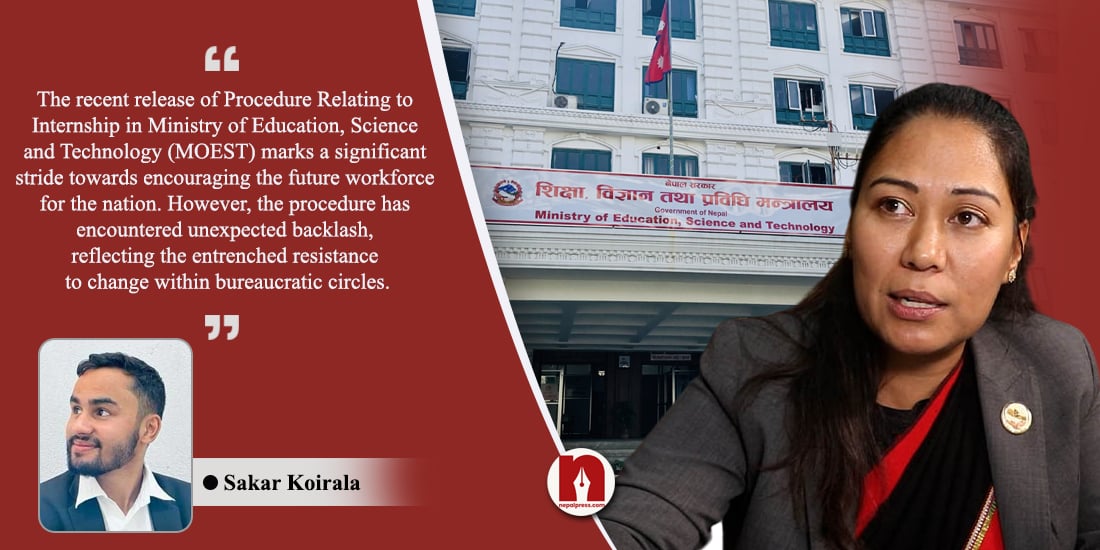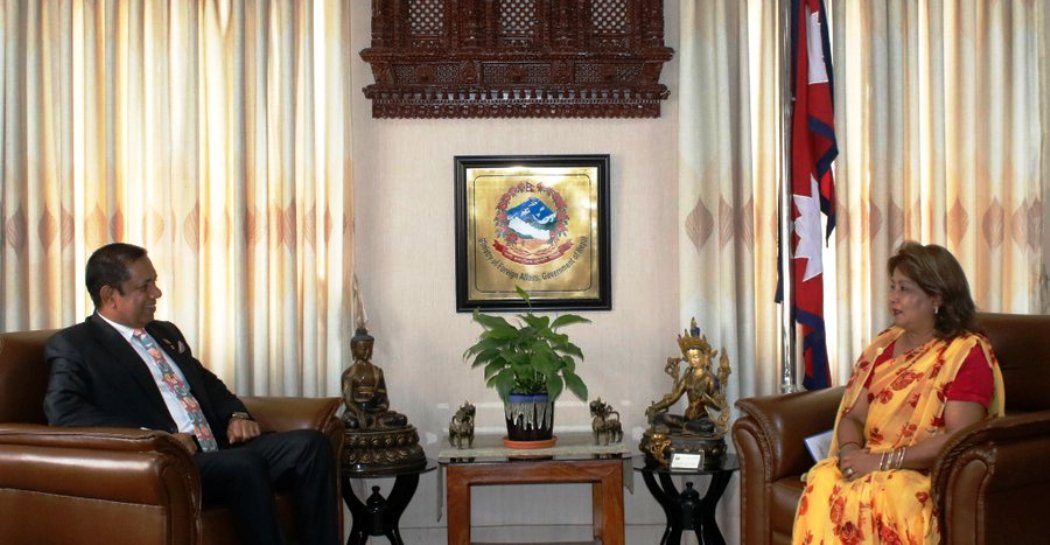Revolutionizing government internships, are we ready?

The Ministry of Education, Science, and Technology (MOEST) released the Procedure Relating to Internship 2080 on April 1, 2024, in an effort to revitalize the field of educational internships. This was a major change from the previous “Education Catalyst Mobilization Procedure 2080, which was quickly repealed on March 28, 2024, just four days after it was introduced, as a result of criticism from the bureaucracy and the media.
The updated Internship Procedure, by the Education Ministry led by Sumana Shrestha, attempts to simplify the internship procedure by addressing previous procedural inconsistencies. The new policy outlines a framework that is structured and intended to encourage a mutually beneficial interaction between government agencies and higher education institutions and the undergraduate students.
The procedure begins with describing terms in Chapter 1, explaining what is meant by “higher education,” “higher education institutions,” “interns,” and “students.”
In the procedure, “higher education” is described as education at the bachelor’s level or beyond. It encompasses universities, institutes, or any institution offering advanced education. An “intern” is outlined as a trainee selected through this procedure to work within the Ministry. When referring to the “Ministry,” it specifically denotes the Ministry of Education, Science, and Technology, “student” is defined as an individual enrolled in a higher educational institution, either actively pursuing higher education or awaiting the completion of their degree
Chapter 2 sets forth arrangements regarding interns, emphasizing the ministry’s prerogative to provide practical skills and work experience relevant to its operational domain. Furthermore, it introduces the formation of committees tasked with evaluating prospective interns based on regional identity, student interest, and academic specialization.
Chapter 3 elaborates on the eligibility criteria for interns, mandating Nepali citizenship and an ongoing pursuit of higher education. The selection method, articulated in Chapter 3, underscores a merit-based approach, emphasizing academic proficiency and interview performance.
The recent release of Procedure Relating to Internship in Ministry of Education, Science and Technology (MOEST) marks a significant stride towards encouraging the future workforce for the nation. However, the procedure has encountered unexpected backlash, reflecting the entrenched resistance to change within bureaucratic circles.
In the middle of the craze for the domestic debate, it’s fruitful to take a quick look at international internship governance practices. Take, for instance, the United States federal internship programs. Within the Executive Office of the President, structured internship opportunities abound, offering students invaluable exposure to governmental operations. The Pathways Internship Program, in particular, serves as a beacon of meritocracy, providing paid internships and potential pathways to permanent employment.
In a comparable way, India’s Ministry of External Affairs and Ministry of Corporate Affairs coordinate large internship programs that create an environment that is favorable to professional development and hands-on learning and The Permanent Mission of India to the United Nations offers internships for young scholars to familiarize themselves with India’s approach to multilateralism and handling of global issues at the UN.
These programs highlight how important government organizations are to developing the next generation of leaders and legislators.
Government ministry undergraduate internships are extremely valuable for students looking to add practical knowledge to their academics. These experiences not only improve their educational experiences but also give them priceless insights and abilities that are necessary in today’s competitive environment.
Through internships, students have a personal understanding of the complexities of policy-making, administrative procedures, and public service delivery while immersed in the daily operations of government departments. Students can apply what they have learned in the classroom to real-world situations. Not only that, students can test out different career routes in the public sector. Interns can make educated decisions about their future career paths by identifying their interests, strengths, and preferences through a variety of positions and responsibilities.
To sum up, developing collaboration between bureaucracy and students is important for bringing about significant changes in the frameworks for government internships. Nepal has the potential to create internship programs that enable the younger generation to make significant contributions to the country’s development by utilizing their insights and energy alongside the knowledge and direction of experienced bureaucrats.
Nepal is able to fully capitalize on its young people’s potential and create a better future for future generations by working together.
It is time for policymakers to appreciate the importance of student involvement and welcome their new viewpoints in order to create inclusive and innovative internship programs. Nepali internship model is still firmly established in bureaucratic authority, in contrast to global precedents. The bureaucracy’s hesitation to support innovative ideas, like Minister Sumana Shrestha’s, highlights the systemic opposition to change.
The author is a Law Undergraduate studying in Purbanchal University.















